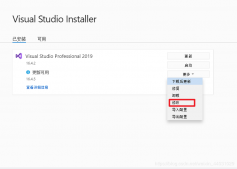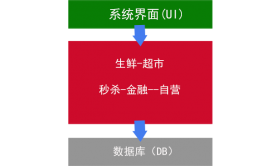前言
之前面试过程被问到数组去重有哪些方式?心想这个问题我会,随便也能说出好几种,也不带多思考的。巴拉巴拉巴拉巴拉。说完,面试官好像不太满意的样子,还问了句,没了吗。我想,咋滴,就这些还不不够用吗。然后就下一题了。
后来我看到这样的数据,忽然意识到,之前的面试怕不是草率了,完全没考虑复杂数据结构,难怪他听完不太满意的样子。
let arr = [1, 1, '2', 3, 1, 2,
{ name: '张三', id: { n: 1 }},
{ name: '张三', id: { n: 1 }},
{ name: '张三', id: { n: 2 }}
]
在平时的开发过程中这样的数据应该少见,绝大部分的数组中数据格式应该保持一致,特殊情况就不管他了。
今天再来出一期数组去重的方式。
基本数据类型去重
确实有多种方式,比如set结构转一下,lodash提供的uniq方法,或者自己利用其他方式实现也是很多的。今天就介绍几个
当面试官询问数组去重时,可以考虑到数组可能包含基本数据类型、引用数据类型,或者混合了两种类型的情况。以下是针对不同情况的多种思路和实现方法:
使用 Set 数据结构(ES6)
const array = [1, 2, 3, 3, 4, 5, 5]; const uniqueArray = [...new Set(array)]; console.log(uniqueArray); // [1, 2, 3, 4, 5]
使用 Array.prototype.filter()
const array = [1, 2, 3, 3, 4, 5, 5]; const uniqueArray = array.filter((item, index) => array.indexOf(item) === index); console.log(uniqueArray); // [1, 2, 3, 4, 5]
使用 Array.prototype.reduce()
const array = [1, 2, 3, 3, 4, 5, 5];
const uniqueArray = array.reduce((acc, curr) => {
if (!acc.includes(curr)) {
acc.push(curr);
}
return acc;
}, []);
console.log(uniqueArray); // [1, 2, 3, 4, 5]
使用 for 循环和 Array.prototype.indexOf()
const array = [1, 2, 3, 3, 4, 5, 5];
const uniqueArray = [];
for (let i = 0; i < array.length; i++) {
if (uniqueArray.indexOf(array[i]) === -1) {
uniqueArray.push(array[i]);
}
}
console.log(uniqueArray); // [1, 2, 3, 4, 5]
Lodash 是一个非常流行的 JavaScript 工具库,提供了许多实用的函数来简化开发过程。它也包含了一些用于数组去重的方法。以下是几种利用 Lodash 实现数组去重的方法:
使用 _.uniq() 方法
const _ = require('lodash');
const array = [1, 2, 3, 3, 4, 5, 5];
const uniqueArray = _.uniq(array);
console.log(uniqueArray); // [1, 2, 3, 4, 5]
使用 _.uniqWith() 方法(使用自定义比较函数)
const _ = require('lodash');
const array = [{id: 1}, {id: 2}, {id: 1}];
const uniqueArray = _.uniqWith(array, (a, b) => _.isEqual(a, b));
console.log(uniqueArray); // [{id: 1}, {id: 2}]
2. 数组包含引用数据类型:
使用 Set 数据结构,利用自定义比较函数(如果需要去重对象数组)
const array = [{id: 1}, {id: 2}, {id: 1}];
const uniqueArray = Array.from(new Set(array.map(JSON.stringify)), JSON.parse);
console.log(uniqueArray); // [{id: 1}, {id: 2}]
使用 Array.prototype.reduce()
const array = [{id: 1}, {id: 2}, {id: 1}];
const uniqueArray = array.reduce((acc, current) => {
const isExist = acc.some(item => JSON.stringify(item) === JSON.stringify(current));
if (!isExist) acc.push(current);
return acc;
}, []);
console.log(uniqueArray); // [{id: 1}, {id: 2}]
上面都是使用了JSON.stringfy。但有个问题,如果引用数据的顺序不一样,转的string就不等了。所以还是自己实现一个方法好一些。
使用自定义比较函数
这种方法适用于任何类型的数组,包括混合了基本数据类型和引用数据类型的数组。
function uniqueArray(array) {
const seen = new Map();
return array.filter(item => {
if (typeof item === 'object' && item !== null) {
const key = Object.keys(item).sort().map(k => `${k}:${item[k]}`).join('|');
if (!seen.has(key)) {
seen.set(key, true);
return true;
}
} else {
if (!seen.has(item)) {
seen.set(item, true);
return true;
}
}
return false;
});
}
const array = [1, 2, {id: 1}, {id: 2}, 1, {id: 1}];
const uniqueArr = uniqueArray(array);
console.log(uniqueArr); // [1, 2, {id: 1}, {id: 2}]
这个方法利用了 Map 数据结构的特性,用键来存储数组中的元素,保证了元素的唯一性。对于对象,通过将属性名排序并拼接成字符串来判断是否重复。
如果都是引用结构,我们平时也可以使用 _.uniqBy() 方法去重,比如根据id什么的
const _ = require('lodash');
const array = [{id: 1}, {id: 2}, {id: 1}];
const uniqueArray = _.uniqBy(array, JSON.stringify);
console.log(uniqueArray); // [{id: 1}, {id: 2}]原文地址:https://mp.weixin.qq.com/s/9-moTbwIukE_0Ql1Aosaow


















